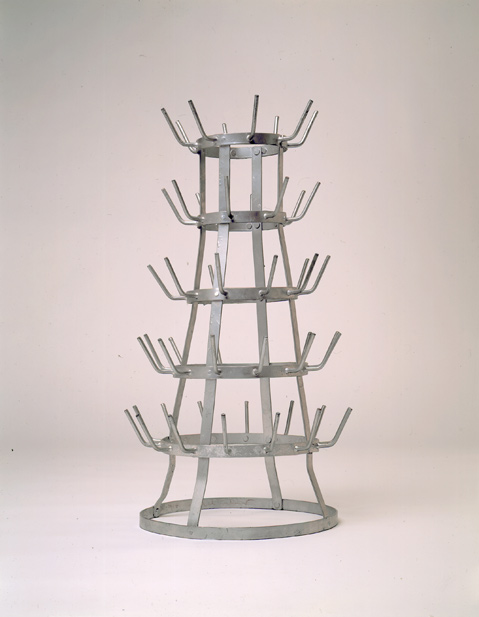Art in Two Cities
From Pasadena to Santa Barbara at the Santa Barbara Museum of Art
Santa Barbara’s contribution to the massive Pacific Standard Time project kicks off this weekend at the Santa Barbara Museum of Art with a show that describes the close art connection that existed in the 1950s and 1960s between Pasadena and Santa Barbara. These courageous cities were home to a pair of institutions — the Pasadena Art Museum (now the Norton Simon Museum) and the Santa Barbara Museum of Art — that, between them, led the way to the California Renaissance of the 1970s and 1980s that is the focus of Pacific Standard Time. At the heart of the story is Thomas Leavitt, the charismatic and visionary museum director who ran the PAM and then SBMA. Leavitt took major contemporary artists from New York and Europe — people like Jasper Johns, Robert Rauschenberg, and Marcel Duchamp — and showed them alongside the best young artists living and working in Southern California at the time. The results were multiple and consequential, as between them, the two cities racked up an extraordinary series of art historical coups, such as giving Duchamp his first retrospective exhibition in America in 1962 at the PAM and showcasing Philip Guston’s notorious turn to figuration in 1967.

The new exhibition, which opens Saturday, February 11, features some of the most interesting work ever done in California, along with indelible images from the out-of-state superstars that Leavitt brought here half a century ago. Curator Julie Joyce (SBMA) has recruited the Norton Simon Museum’s Leah Lembeck and noted painter and art critic Peter Plagens to write essays for a terrific catalogue, and she has chosen an amazing array of works by John Altoon, Karel Appel, Richard Diebenkorn, William Dole, Duchamp, Llyn Foulkes, Guston, Robert Irwin, Ed Kienholz, Larry Rivers, Mark Tobey, Beatrice Wood, and many, many others.
“It was a really interesting period for these museums, particularly in relation to artists from outside of Southern California,” Joyce told me when I spoke to her about the show. “There were several really influential solo shows that Thomas Leavitt organized apart even from the Marcel Duchamp show at the Pasadena Art Museum — exhibitions by Robert Motherwell, Mark Tobey, and Larry Rivers — that, taken together, had a huge impact on the way that art was practiced here,” she said. “When Leavitt left Pasadena, it was for the Santa Barbara Museum of Art, where he knew there was already an important collection of American art,” Joyce said, “and with the knowledge that his successor in Pasadena, Walter Hopps, would continue on with the work he had begun there.”
This show demonstrates the way that adventurous, visionary museums can achieve a leading, even central, role in the development of contemporary art. By weaving together the emerging narratives of young Southern California artists with those of the greatest pioneers in modern art worldwide, Leavitt, Hopps, and their colleagues at the two institutions gave shape and identity to what would become the greatest new American art scene after New York.
From Pasadena to Santa Barbara does more than just reflect an important piece of history, because the premise of Leavitt and company’s method is that artists can live wherever they want — as long as the place they choose has a museum that can consistently expose them to the best work being done elsewhere. Even traveling to the big art fairs and museums, never mind surfing the Web, can’t substitute for the thrill of seeing important new art in the flesh, and in your own hometown. The faith that this approach to the role of the art museum in a community will make it possible for the artists who live and work there to make the leap to whatever level of recognition they deserve is what keeps us all going, and this show is a great reminder of that, and a lot of fun, too.
4•1•1
Pasadena to Santa Barbara: A Selected History of Art in Southern California, 1951-1969 opens at the Santa Barbara Museum of Art (1130 State St.) on Saturday, February 11, and will show through Sunday, May 6. For info, call 963-4364 or visit sbma.net.



